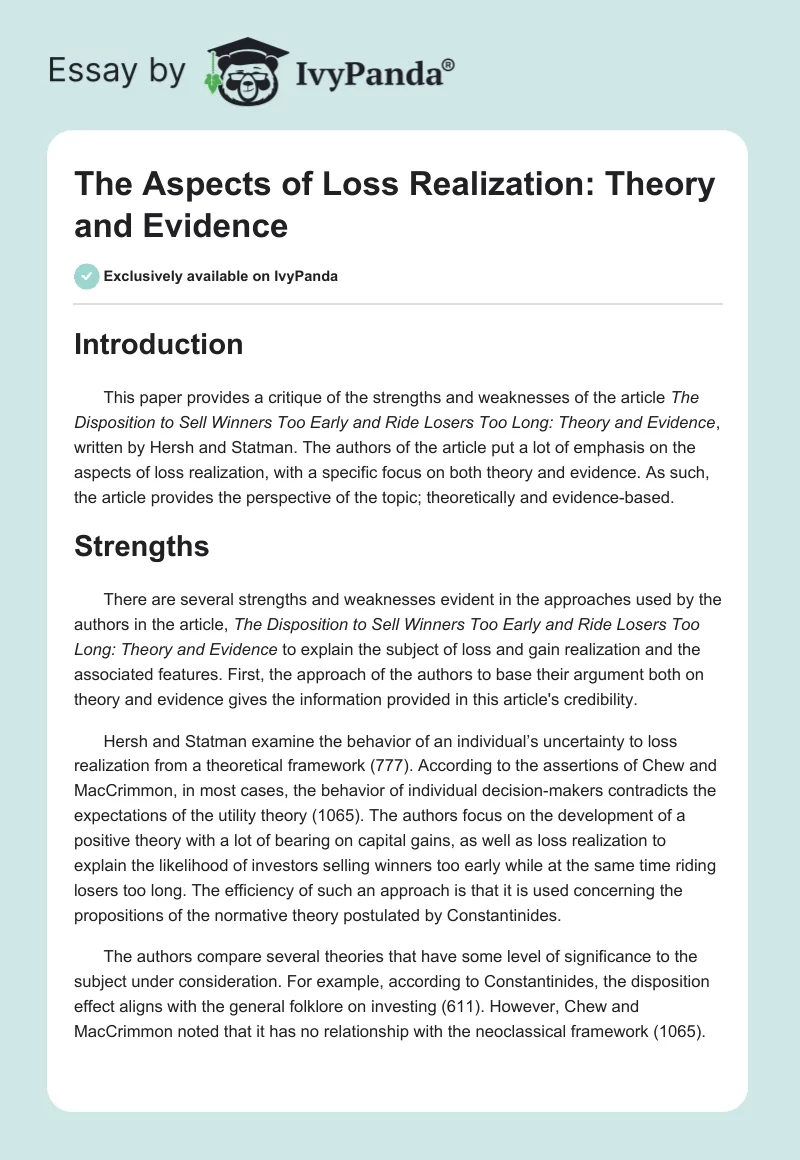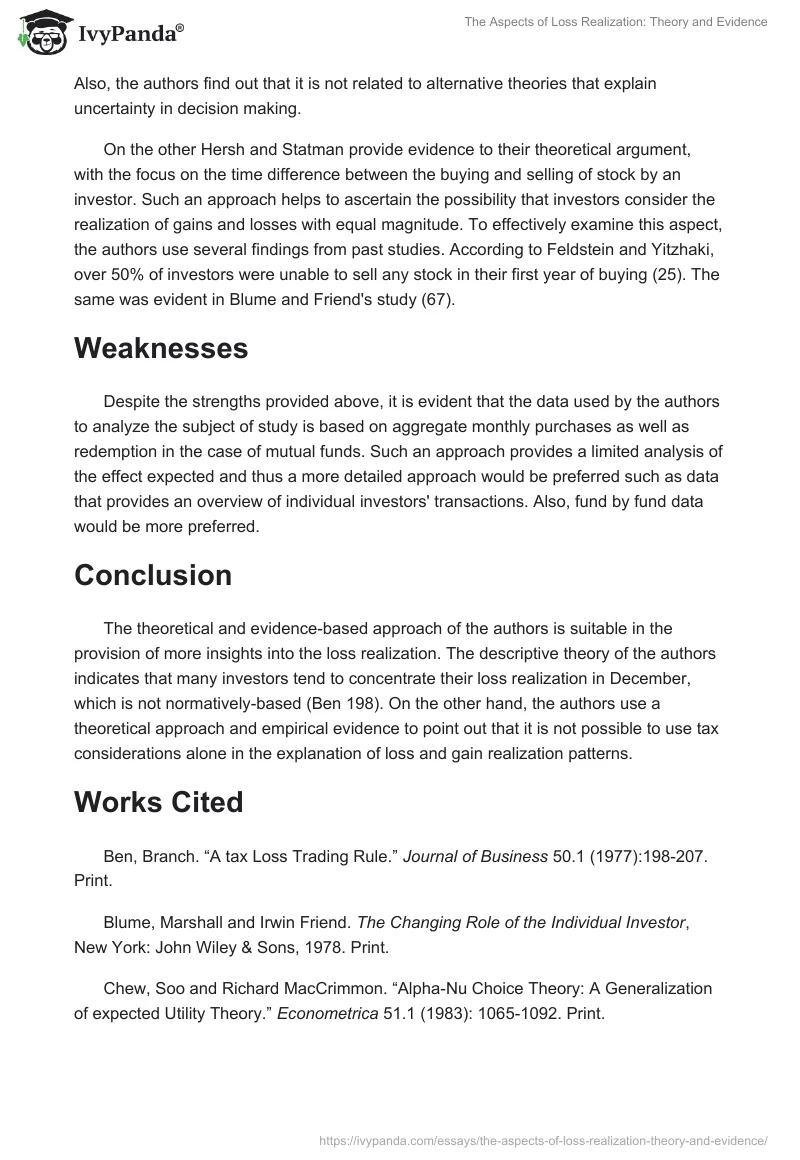Introduction
This paper provides a critique of the strengths and weaknesses of the article The Disposition to Sell Winners Too Early and Ride Losers Too Long: Theory and Evidence, written by Hersh and Statman. The authors of the article put a lot of emphasis on the aspects of loss realization, with a specific focus on both theory and evidence. As such, the article provides the perspective of the topic; theoretically and evidence-based.
Strengths
There are several strengths and weaknesses evident in the approaches used by the authors in the article, The Disposition to Sell Winners Too Early and Ride Losers Too Long: Theory and Evidence to explain the subject of loss and gain realization and the associated features. First, the approach of the authors to base their argument both on theory and evidence gives the information provided in this article’s credibility.
Hersh and Statman examine the behavior of an individual’s uncertainty to loss realization from a theoretical framework (777). According to the assertions of Chew and MacCrimmon, in most cases, the behavior of individual decision-makers contradicts the expectations of the utility theory (1065). The authors focus on the development of a positive theory with a lot of bearing on capital gains, as well as loss realization to explain the likelihood of investors selling winners too early while at the same time riding losers too long. The efficiency of such an approach is that it is used concerning the propositions of the normative theory postulated by Constantinides.
The authors compare several theories that have some level of significance to the subject under consideration. For example, according to Constantinides, the disposition effect aligns with the general folklore on investing (611). However, Chew and MacCrimmon noted that it has no relationship with the neoclassical framework (1065). Also, the authors find out that it is not related to alternative theories that explain uncertainty in decision making.
On the other Hersh and Statman provide evidence to their theoretical argument, with the focus on the time difference between the buying and selling of stock by an investor. Such an approach helps to ascertain the possibility that investors consider the realization of gains and losses with equal magnitude. To effectively examine this aspect, the authors use several findings from past studies. According to Feldstein and Yitzhaki, over 50% of investors were unable to sell any stock in their first year of buying (25). The same was evident in Blume and Friend’s study (67).
Weaknesses
Despite the strengths provided above, it is evident that the data used by the authors to analyze the subject of study is based on aggregate monthly purchases as well as redemption in the case of mutual funds. Such an approach provides a limited analysis of the effect expected and thus a more detailed approach would be preferred such as data that provides an overview of individual investors’ transactions. Also, fund by fund data would be more preferred.
Conclusion
The theoretical and evidence-based approach of the authors is suitable in the provision of more insights into the loss realization. The descriptive theory of the authors indicates that many investors tend to concentrate their loss realization in December, which is not normatively-based (Ben 198). On the other hand, the authors use a theoretical approach and empirical evidence to point out that it is not possible to use tax considerations alone in the explanation of loss and gain realization patterns.
Works Cited
Ben, Branch. “A tax Loss Trading Rule.” Journal of Business 50.1 (1977):198-207. Print.
Blume, Marshall and Irwin Friend. The Changing Role of the Individual Investor, New York: John Wiley & Sons, 1978. Print.
Chew, Soo and Richard MacCrimmon. “Alpha-Nu Choice Theory: A Generalization of expected Utility Theory.” Econometrica 51.1 (1983): 1065-1092. Print.
Constantinides, George. “Capital Market Equilibrium, with Personal Tax.” Econometrica 51.1 (1983): 611-636. Print.
Feldstein, Martin and Shlomo Yitzhaki. “The Effects of the Capital Gains Tax on the Selling and Switching of Common Stocks.” Journal of Public Economics 9.1 (1978): 17-36. Print.
Hersh, Shefrin and Meir Statman. “The Disposition to Sell Winners Too Early and Ride Losers Too Long: Theory and Evidence.” The Journal of Finance XL.3 (1985): 777-790. Print.


